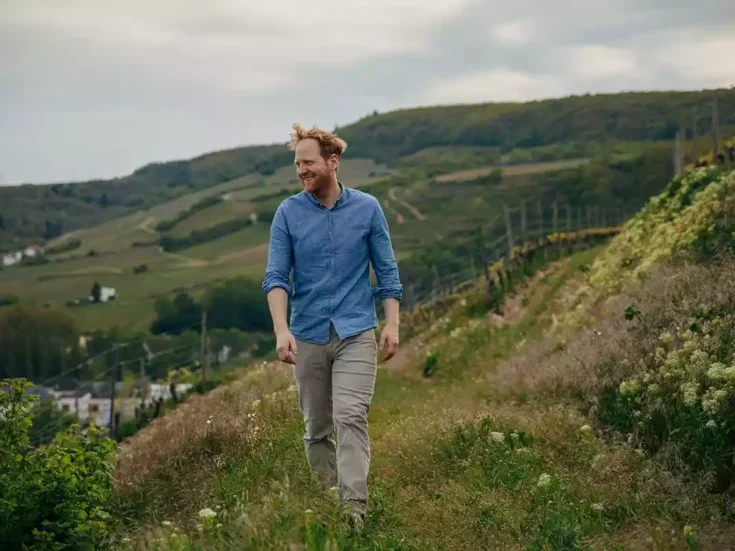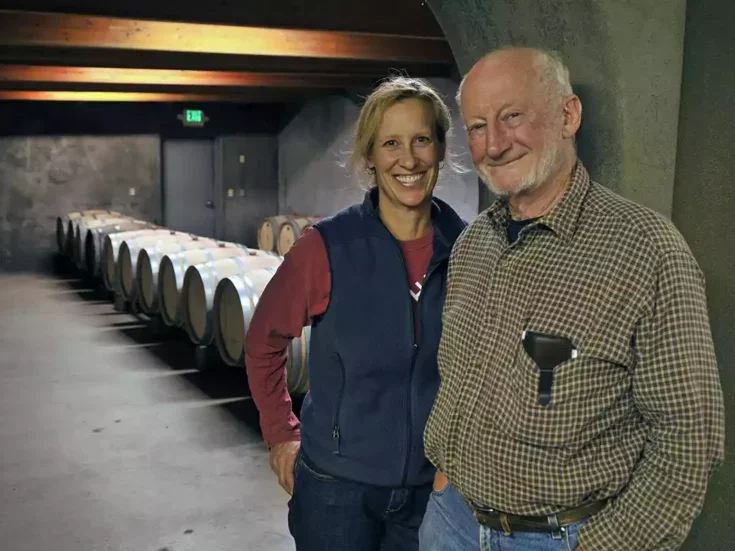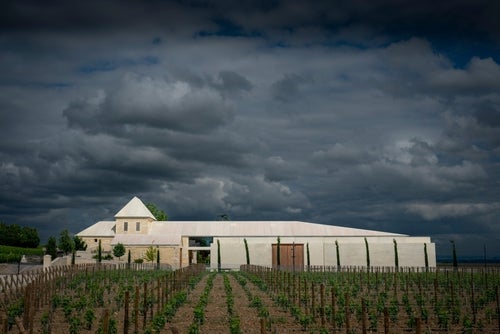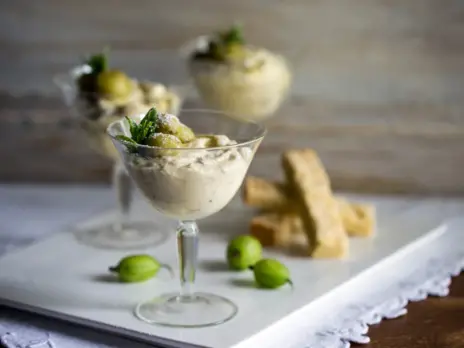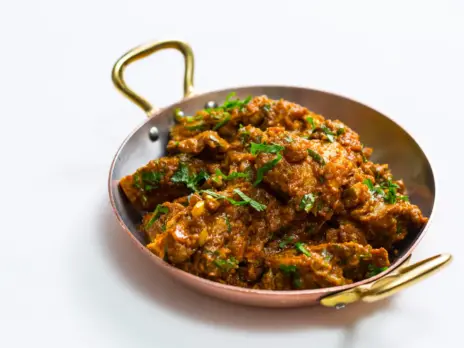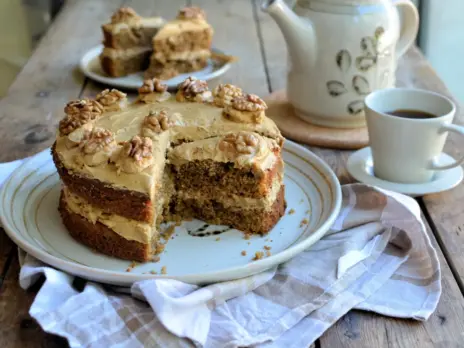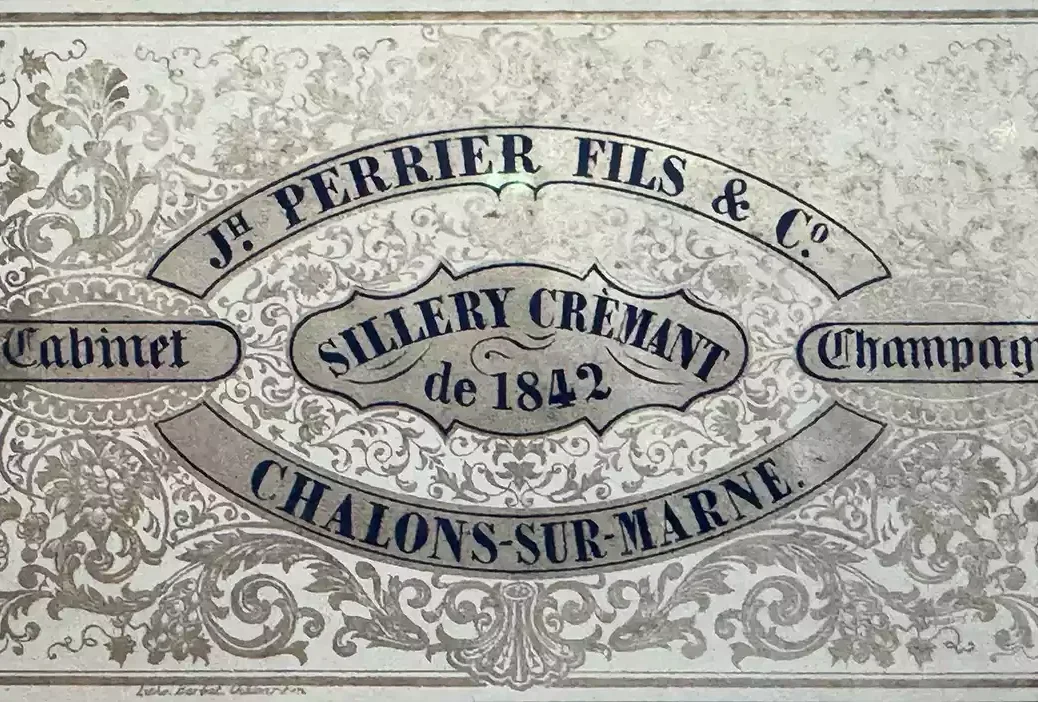
In 1825, Joseph Perrier took over the reins of Perrier & Fils, which had been founded by his father François-Alexandre in what was then Châlons-sur-Marne (rebranded Châlons-en Champagne in 1998). Just ten years earlier, Napoleon had visited Châlons to see the cellars of Jacquesson, considered at the time to be the finest in all of Champagne. Joseph had worked with his father as a wine merchant and was also close to his uncle, Pierre Nicolas-Marie Perrier, who had founded Perrier-Jouët in 1811. Joseph’s brothers Eugène and Benjamin opened their own Champagne business and helped spread the family name far and wide.
After redubbing the company in his own name, Joseph Perrier moved into an old relais de poste in the Avenue de Paris next to the 1,000-year-old network of chalk cellars excavated from the Gallo-Roman quarries in the hill of Fagnières on the left bank of the Marne. Extended to provide almost 2 miles (3km) of galleries, all on the same level, these cellars housed its Sillery Crémant and Bouzy Mousseux, and today they still provide the perfect temperature and humidity for Joseph Perrier’s substantial range of Non-Vintage, Vintage, brut nature, single-vineyard, and prestige cuvée Champagnes.
While Joseph Perrier has remained a family business from the start, the modern era could be said to begin with Claude Fourmon’s son, Jean-Claude, who was born in 1951 in the Avenue de Champagne in a flat that is now part of the Moët complex there. Indeed, he claims to have been baptized with fingers wetted by both Moët & Chandon and Joseph Perrier.
Taking over the running of the company in 1979, he offered a magnum of 1975 Joseph Perrier to Prince Charles and Princess Diana on their marriage. In 1982, he created the new prestige cuvée, Cuvée Joséphine, in homage to Joseph Perrier’s favorite daughter, Stéphanie Josephine. Joseph had had a number of magnums hand-painted specially for her wedding celebration in 1847, and today the bottles are decorated with this design.
Since 1982 there have been further iterations of Cuvée Joséphine made by the company’s chefs de caves, Claude and Jérôme Dervin, in 1985, 1989, 1990, 1995, 1998, 2002, 2004, 2008, 2012, and 2014. Chardonnay and Pinot Noir are normally 50% each, usually from the best parcels each year in Ambonnay, Cumières, Mesnil-sur-Oger, Sacy, and Bergères-lès-Vertus.
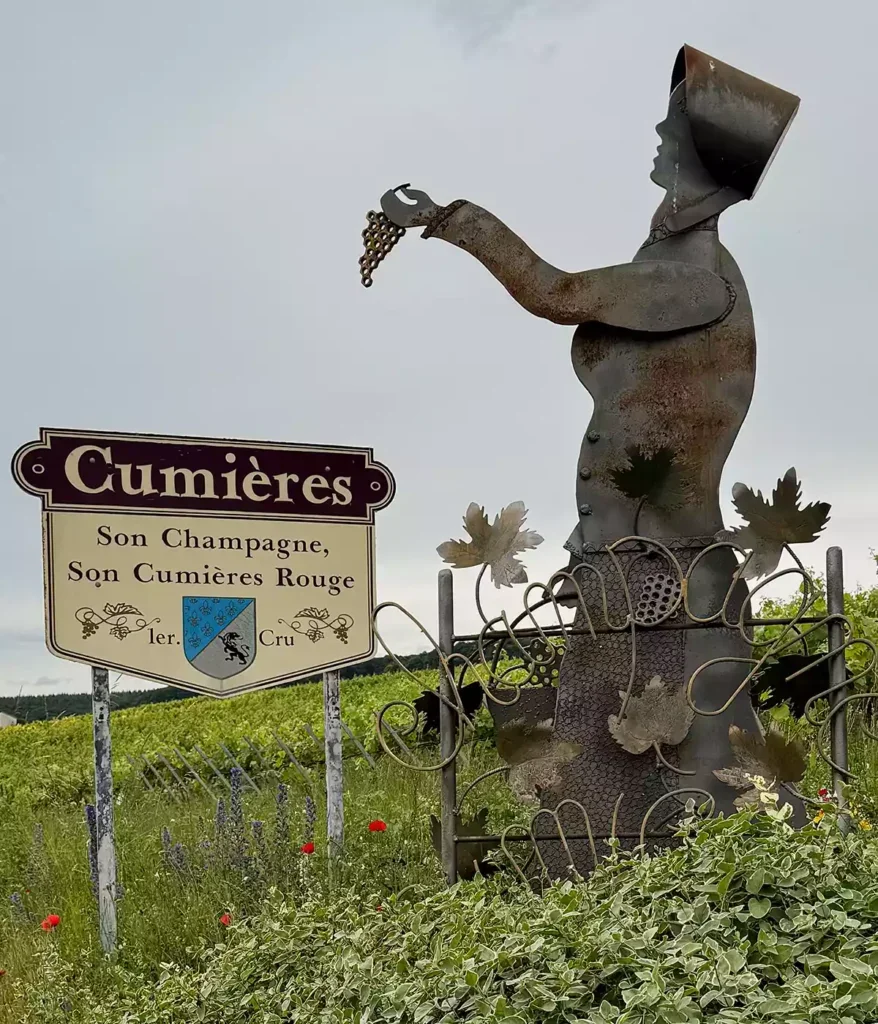
In the mid-1990s, Jean-Claude Fourmon sold a majority stake to the Laurent-Perrier Group, but the company returned to family hands less than two years later when, in 1998, Alain Thiénot, Fourmon’s first cousin, bought out Laurent-Perrier. Ten years later came the first single-vineyard Pinot Noir Blanc de Noirs, La Côte à Bras from the historic plot in Cumières.
Jean-Claude Fourmon’s son, Benjamin Fourmon, has been président-directeur géneral since January 2019, while Jean-Claude remains its most fervent ambassador. Today, Joseph Perrier owns 6.8ha (17 acres) of south-facing Chardonnay and Pinot Noir in Cumières and Hautvillers on the right bank of the Marne, west of Aÿ; 2ha (5 acres) in Damery farther west; 12.5ha (30 acres) of mainly Meunier in Verneuil west of Damery; and 1ha (2.5 acres) each of Chardonnay and Pinot Noir in Bassuet in Vitry-le-François, making a total of 23.3ha (57 acres).
This provides the house with 30% of the supplies it needs for its annual production of close to one million bottles. The remaining 70% comes from loyal growers and partners, most of whom also make their own Champagnes, in 20 or so different sectors of the Côte des Blancs, the Montagne de Reims, and around Vitry-le-François.
The Vallée de la Marne vineyards are south-facing on the right bank of the Marne River. The Cumières terroir is chalkier, with 16–24in (40–50cm) of topsoil, so new plantings such as the Pinot Noir planted in 2014, require the soil to be broken up and aerated to encourage microbial life and to stop roots spreading out close to the surface rather than penetrating the deeper, water-retentive soils. The trellis is cordon de Royat, which is typical for the Vallée de la Marne, with a single horizontal arm from which the canes grow upward. For Chardonnay, the trellis is Chablis, with single or double Guyot. The average vine density is 8,500 vines per hectare. Rootstocks are 41B, phylloxera-resistant, like three quarters of the Champagne region as a whole. The 7.5ha (18.5 acres) of the vineyards in Verneuil have been certified organic since 2012.
Over the past 20 years, Joseph Perrier has reduced treatment inputs by 80% in the traditionally managed vineyards. There are no herbicides and no insecticides. Insects are dealt with by sexual confusion (RAK—500 to the hectare). What are the worst insects? Butterfly, fruit fly, and leafroller. Rognage involves trimming the shoots of the vine, and palissage raising the fruiting wire. In recent years, Joseph Perrier has adopted sustainable and environmentally friendly practices in its vineyards and production, including measures to reduce carbon emissions, conserve water, and promote biodiversity and natural habitats in its vineyards, with hedges, roses, and beehives. The pickers are Polish, and five pressing stations plus one in Vitry are used.
Success and successors
Patrick Martin, the sprightly chef de viticulture, with Joseph Perrier since 1983, is well qualified to talk about vintages in the context of climate change. For him, the most difficult vintages since his arrival have been 1985, with three solid weeks at 95°F (35°C), and 2003, the canicule, which grilled the grapes. 2021 was a mildew year with no more than 10% of the organic vineyards harvested, while 2023 was another challenging year, an early, hot harvest in which rot had set in and turned the potential wine to vinegar. Hence, 2023 will not be a Vintage Champagne year here. Last year, he feared mildew and had to spray every eight days against mildew and oidium. Copper sulfate is used in the organic vineyards, but the problem is that it washes off all too easily and can reduce the microbial activity in the soil.
“Over the past ten years, winters have all but disappeared,” says Patrick. “The effect of winter was to suppress the potential for diseases in the vineyard, and ice would have the beneficial effect of helping to break up and aerate the soil, but there isn’t any ice anymore. The best harvests are those where the length of time between flowering and harvest leads to optimum phenolic ripeness. If you have to pick early, it’s not just warm days but warm nights, too, and the risk to the entire region of picking in August is that acidity is reduced. Where it’s too quick, there’s a danger of volatile acidity where the juice in a 40kg case of grapes starts to ferment if it’s left too long.”
In 2017, Nathalie Laplaige arrived to succeed Jérome Dervin, the last cellar master in four generations of Dervins at Joseph Perrier. Born in Champagne, her first passion was the saxophone that she learned from the age of five. Champagne kicked off for her when she discovered an interest in biochemistry. At the turn of the century, she was an apprentice in the laboratories of Nicolas Feuillatte and De Castellane. Subsequently, as a graduate from the University of Reims in biology and enology, she started to work with Jean-Louis Malard in 2011, where she was responsible for quality control. From there, she went to work on production at Groupe Thiénot before joining Joseph Perrier.
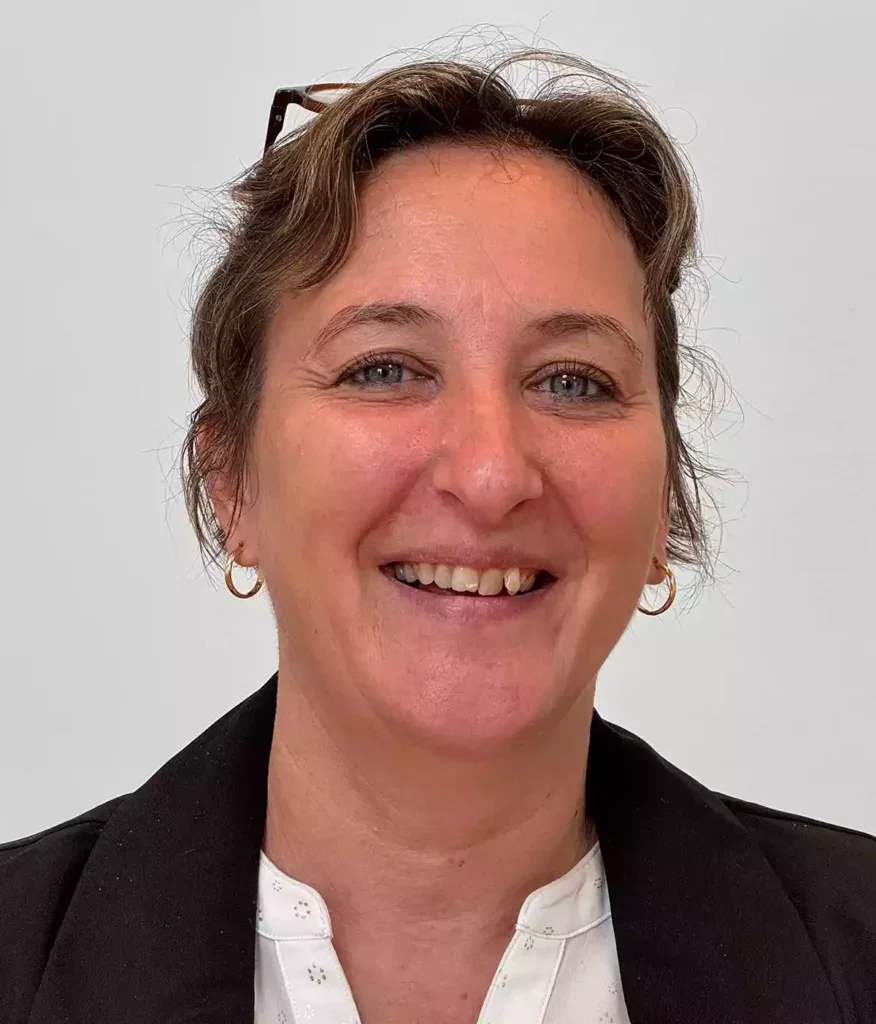
As chef de cave, Nathalie is both production manager and team manager, remaining actively involved in the vineyard development alongside Benjamin Fourmon. She wasn’t a huge fan of the Cuvée Royale rosé when she arrived, thinking it too heavy, too vineux. When she asked Jean-Claude if he was open to her changing the style, not only did he not object, but he confessed that he had never enjoyed the rosé either. So much so that at one dinner where he was speaking about the wines, when it came to the rosé, he said, “Right, now Martin [Gamman MW, his UK representative] is going to talk about it.” When Nathalie said she wanted to change the rosé to a lighter, fresher, and more elegant style, with more Chardonnay and less Pinot Noir, he said, “You’ve got the job.”
Initially, Nathalie worked with Jean-Claude Fourmon for two years, learning the style of the house. The previous tendency was toward a more oxidative, rather than reductive, style. Her role has since evolved with a greater need to be able to communicate to an outside audience, so she is also conducting tastings and traveling. “The most important part of my job is of course to ensure the transmission of the unique style—freshness, purity, and intensity—of Joseph Perrier. For me, to make good Champagne, there are three essential elements: good grapes, a good cellar master, and time. My credo is to reflect the terroir to create the purest expression. The idea is to do everything well but also thoughtfully.”
She has rebalanced the dosage on certain cuvées and has gone more into the vineyards to work with Joseph Perrier’s partners, to really understand the terroir, working alongside veteran vineyard manager Patrick Martin until his recent retirement. There is much exchange of information and talking shop through the chefs de caves’ association. Work on climate change has to be done with the whole profession. They don’t farm the vineyards of their grower partners, but Benjamin and Nathalie know them all personally and, given the length of the relationship, have a very good working knowledge both of the vineyards and the wines that are produced.
“Blending is our greatest asset, and we are increasingly picking grapes by plot.” Nathalie has carried out trials in the cellar on malolactic fermentation and on dosage. With the evolution of the climate, Nathalie is experimenting with different levels of malolactic fermentation. She feels that this may prove to be a route to help preserve freshness. She is also conscious, however, that it can affect the style of the wine, so today it forms just one part of her research into how the winemaking and vineyards may need to evolve. The taille is retained as vin clair and used if required.
The wines are fermented 100% in stainless steel. She says that she likes wood, but only when you don’t taste or feel it and when it can bring something to the wine. She hasn’t closed her mind to using wood, but “It’s à la mode, and I’m a bit contre la mode.” Some 20 years ago, the dosage on the Brut NV was around 12g/l, while today it’s 7g/l, and the amount of added sulfur dioxide has also been reduced. Both traditional and pneumatic presses are used. “We have reduced the amount of sulfur used at every stage, and we have reduced the dosage across the range, though this has been a winemaking decision as much as something that can be directly related to climate change.” Two brut nature cuvées have been introduced over the past 12 years, and with the single-vineyard Blanc de Noirs, these now add a snapshot of each harvest over time.
In its Non-Vintage Champagnes, the style is light and refreshing, with a dosage of around 7g/l for the three NV brut wines and normally 5g/l for the Vintage wines. The date of disgorgement is mentioned on the single-vineyard Blanc de Noirs Brut Nature and the Cuvée Royale NV Brut Nature and will feature on the 2012 Vintage label, with the rest of the range to follow. A new Champagne label makeover, with a vertical band, colored according to the cuvée, down the label, can take getting used to, but it grows on you and complements the unique bottle shape of Joseph Perrier Champagne. Quantities are between 900,000 and one million bottles, with a plan to increase production to 1.1 million bottles. At the same time, recent investment has included the acquisition of an extra 1.25 miles (2km) of cellars, which have been joined by a 165ft (50m) tunnel to the existing 2 miles (3km) of cellars. Just enough capacity, then, for the next 200 years.
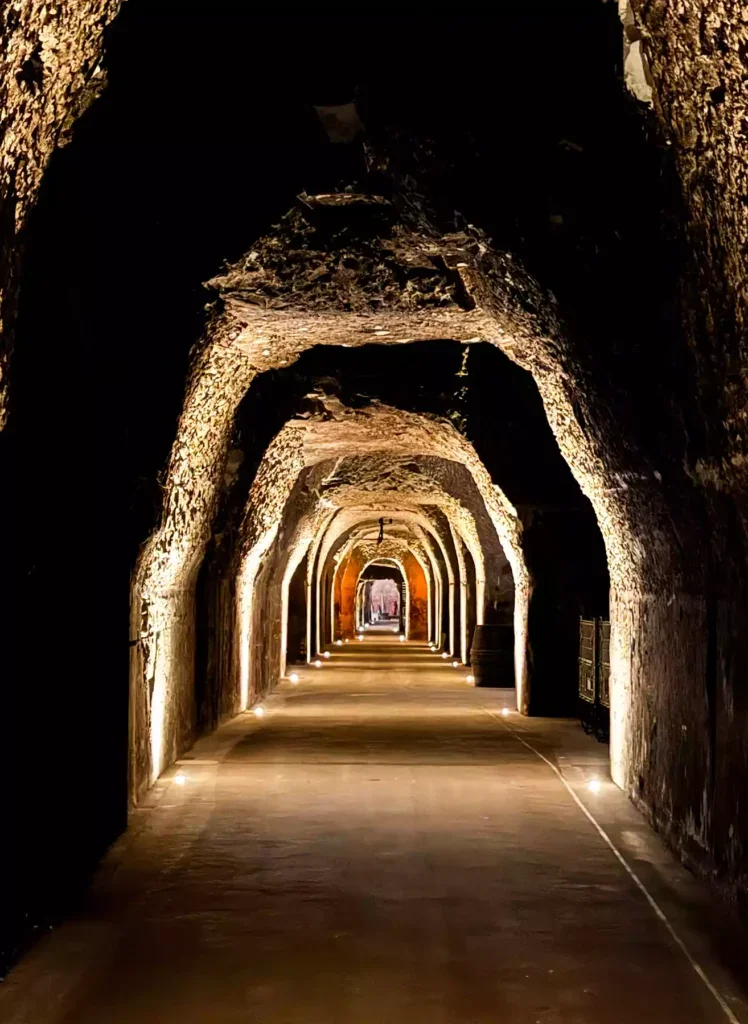
Tasting
Joseph Perrier Cuvée Royale NV Brut
Based on the 2021 vintage, this blend of 35% Chardonnay, 35% Pinot Noir, and 30% Meunier (with 20% reserve wine) was disgorged in November 2024 with 6g/l dosage. Pale lemon in color, it is fresh and apple-scented, with a background trace of biscuit from autolysis; and on tasting, there’s a mousse of ripe apples, even a hint of toffee apple, and the sense of a well-proportioned sparkling wine whose mid-palate sweetness is nicely contrasted by a tangy streak of refreshing, citrus-zesty acidity for elegant overall balance. A good apéritif sparkler.| 92
Joseph Perrier Cuvée Royale NV Blanc de Blancs
Pure Chardonnay—with more than 50% from Bassuet in Vitry, based on the 2021 vintage, with 15% reserve wine, and disgorged in August 2024 with a dosage of 6g/l—this pale-straw blanc de blancs is refreshingly citrus-zesty and floral in its aromas. On first tasting, a fine mousse of bubbles delivers a fruit-forward, sherbet lemony sweetness, with a hint of vanilla biscuit. It bursts in shards of citrus peel on the tongue to sweet-
and-sour effect, enhanced by a delicate streak of crisp acidity. | 93
Joseph Perrier Cuvée Royale NV Brut Rosé
Based on the 2021 vintage and disgorged in 2024 with a dosage of 7g/l, this is a blend of 40% Chardonnay, 40% Pinot Noir, and 20% Meunier, including 10% red wine from four different villages. A bright coppery pink in color, it’s fragrantly fresh and floral-scented, with berry-fruit notes in the background. On tasting, it’s the featherbed cushion of textured bubbles that first strikes you, with delicate raspberryish fruit dissolving on the tongue in an elegantly dry style, with a refreshingly crunchy, berry-fruit finish. | 93
Joseph Perrier Cuvée Royale NV Brut Nature
Based on the 2018 vintage, this blend of 62% Chardonnay, 14% Pinot Noir, and 24% Meunier, including 24% reserve wine, was disgorged in September 2024. Pale lemon, invitingly fresh and floral, the first thing that strikes you on tasting is a buoyant, lively mousse of bubbles carrying a green-apple and pear-fruit character that balances ripeness with incisive acidity, all the while retaining a super-fresh, mouthwatering quality and a tangy, elegantly bone-dry finish that keeps on refreshing the palate, rendering this elegantly styled fizz ethereal rather than austere. A perfect summer’s apéritif or partner for shellfish. | 92
2015 Joseph Perrier Cuvée Royale Extra Brut
A blend of 55% Chardonnay and 45% Pinot Noir, made only from premiers crus, disgorged in August 2024 with a dosage of 3g/l, this is straw yellow in color, showing super aromatic complexity, with ripe, sweet apples and background notes of a grilled almondy, nutty character after 108 months on the lees. Very inviting indeed, and invitation accepted—there’s a chiffon-textured mousse delivering concentrated and intense fruit flavor from an opulent vintage, the ripeness bisected by an incisive streak of mouthwateringly fresh acidity, all beautifully balanced. | 94
2015 Joseph Perrier La Côte à Bras Parcelle AH83 Brut Nature Cumières
Almost rose gold in its mature, rich golden hue, this pure Pinot Noir—after 108 months on the lees before disgorgement without dosage in March 2024—smells quite divine. Tiny pinprick bubbles burst on the surface to reveal almond-biscuit notes, honey, and ripe apples. You want to keep sniffing, but sooner or later, giving way to temptation, the taste fulfills the promise of the aromas as shards of tiny bubbles from an explosive mousse deliver a delicate and delicious fruit quality; its sweetness is checked by a crunchy berry-fruit, bone-dry finish that crimps and pinches the tongue in its sadomasochistic grasp. | 95
2014 Joseph Perrier Cuvée Joséphine Extra Brut
Joseph Perrier’s Vintage prestige cuvée is composed of 60% Chardonnay and 40% Pinot Noir (Ambonnay, Sacy, Cumières, Bergères-lès-Vertus, Mesnil-sur-Oger), disgorged in the winter of 2022 at 5g/l dosage. A pale gold in color, it exudes exotic aromas of ripe pineapple and sweet praline and biscuity notes. On tasting, the rich, maturing stone-fruit flavors are carried on a fine mousse of bubbles that dissolve satisfyingly in tiny pinprick sensations of opulent fruit held aloft by a spicy and savory, truffley character, before pinching the tongue and dissipating in a tang of crisply refreshing acidity. Yes, tonight, Josephine. | 95
2020 Joseph Perrier Le Ciergelot Parcelle ZD214 Brut Nature
From the Ciergelot vineyard in Verneuil, this pure Meunier blanc de noirs was disgorged in July 2024 with zero dosage. It is pale, with a coppery tinge to it, almost a blush rosé, and showing a fresh floral and berry-fruit fragrance, still elemental when you taste it. It’s a wine of seamless berry-fruit quality, whose lively mousse delivers an impression of sweetness cut by a crisp tang on the finish, while a gentle, grippy hint of phenolic bitterness adds to the overall sense of freshness. | 93
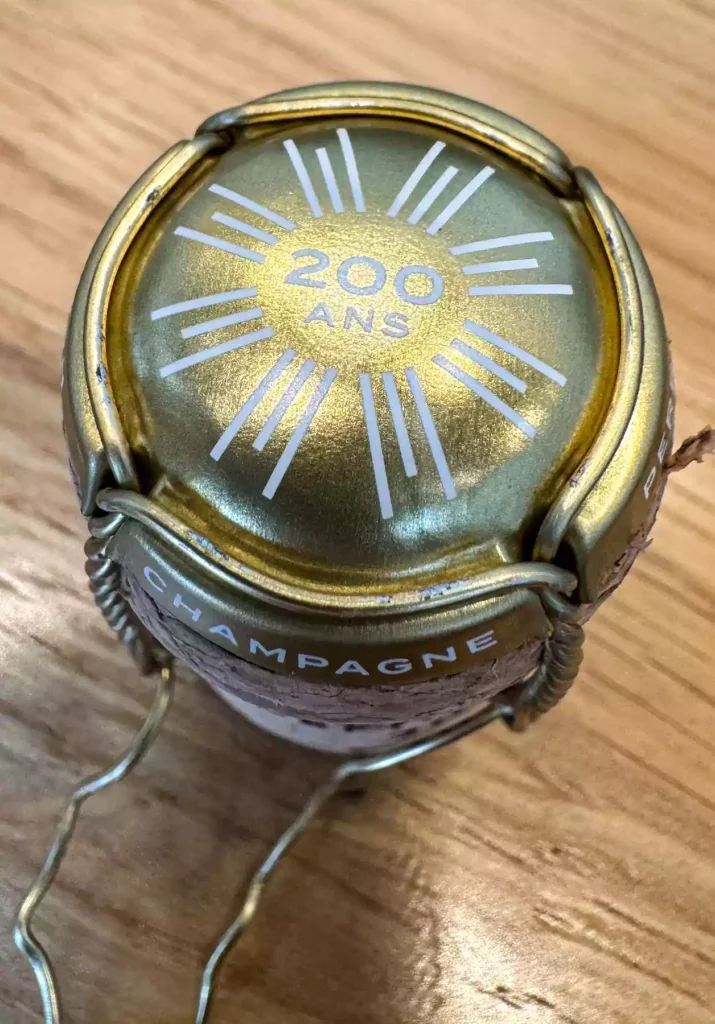
2015 Joseph Perrier 200 Cuvée du Bicentenaire (magnum)
There are 2,000 magnums and 1,500 Jéroboams of this bicentenary cuvée, which was disgorged midway through 2024 after 96 months on the lees, with a low dosage of 3g/l. It is a blend of 50% Chardonnay (Cumières 29%, Chouilly 21%) and 50% Pinot Noir (Ambonnay), and its pale-lemon hue bears witness to a wine still youthful in both aroma and taste. Behind a hint of cream and honey lies a delicate chiffon lemon and mandarin mousse, amplified by richly concentrated, subtly flavored fruit, seamlessly dissolving on the tongue in an elegantly restrained dry finish. Even after all this time in bottle, it could happily benefit from more post-disgorgement aging. | 94

